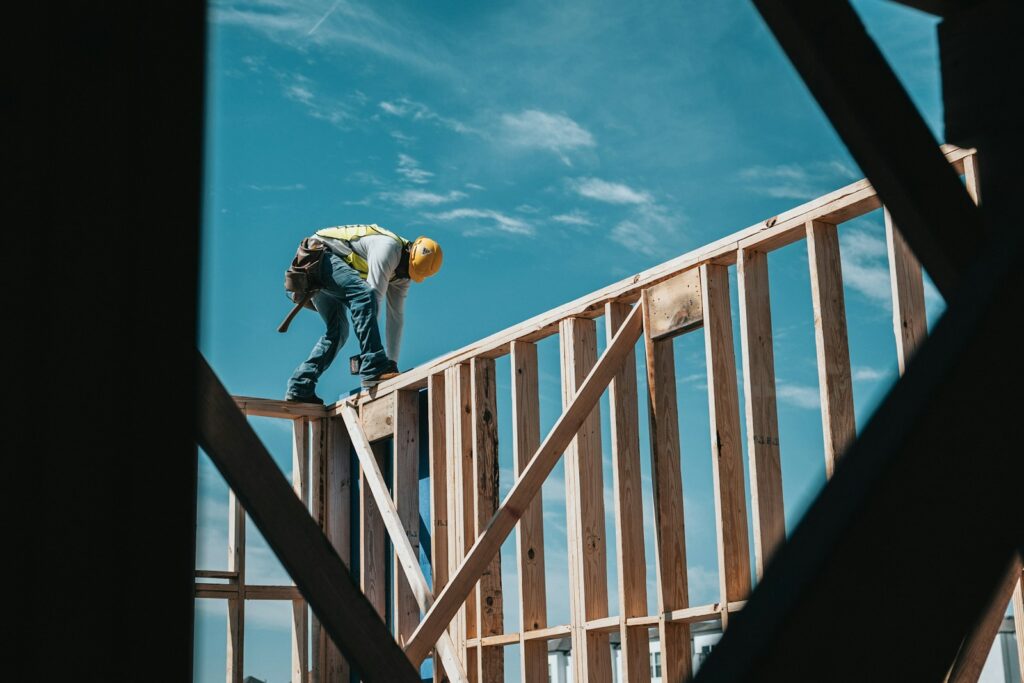Why Your Jobsite is Bleeding Money (And What To Do About It)
Every construction project features a unique set of challenges companies must overcome. Whether we’re talking about terrain, weather conditions, materials, or labor, there’s always something that can derail delivery.
To make matters worse, these issues often come at the worst possible time. For example, some of your employees might get sick during summer, when it’s really hard to find new workers. Or the material prices might change as soon as you sign a contract.
Whatever the problem might be, you must stay agile and trust technology. In this article, we’ll talk about the best practices that will increase your profitability and, more importantly, help you avoid backtracking.
6 Phases of Construction Lifecycle
Even the simplest buildings can be a logistical nightmare. This is why we stick with a tried and tested framework that covers all the angles. Here are the most common stages of a traditional construction lifecycle:
- Designing: During the design phase, your architects will create the initial blueprint for the building. Besides determining the building’s features, the design phase includes a feasibility study that outlines potential roadblocks.
- Making a Bid: Several companies will present their solutions to the investor. These contractors will visit the site, and some of them might have to review the drawings along the way.
- Conducting Pre-Construction: During this stage, the company that got the job will gather subcontractors and partner up with specialists. They will create a detailed schedule and a roadmap.
- Executing the Project: This is the primary phase of the project, during which a contractor actually constructs the building. The company’s main goal is to complete tasks as soon as possible without incurring additional expenses.
- Controlling the Project: The project is almost complete, and the company’s team of engineers and architects will check if everything’s in place.
- Closing Out: Once the building is finished, the company will prepare documentation and pass it to maintenance. The contractor will also cover labor, material, and other debts.
It is worth mentioning that each stage has its own set of challenges. Depending on how you tackle them, you might start losing money even while bidding on a project.
How Companies Lose Money on Projects
With so many moving parts around you, it is hard to stay on top of things. So, the least you can do is get acquainted with these common issues that could eat away your profits.
- Design Issues
Investors often expedite project planning and design with contractors so they can make a fast turnaround. Unfortunately, this sloppiness often leads to a plethora of issues that become noticeable later on. For example, due to a hastily planned design phase, you might have to go back to the drawings several times over.
Among other things, you might encounter issues pertaining to logistics. Another common mistake has to do with discrepancies between MEP trades and architectural sheets. So, we always recommend you take your time during this phase to avoid overlooking potential mistakes.
- Wrong Cost Estimates
Estimating project costs is a very hard task. No matter how much you plan ahead, there’s always a chance materials will become more expensive or that you’ll have to pay your crew overtime.
Although you can’t do anything about the macroeconomic factors, you can make a more realistic assessment by visiting the job site. Ask your team to double-check terrain features, consider the season, check the state of your equipment, and sign a crew as fast and as cheap as possible.
- Construction Site Theft
A lot of people will come and go from the construction site. Unfortunately, some of them might steal materials and equipment from your team and others. Even if we disregard people who work there, someone might break in during the night and steal your stuff.
We must also consider the impact of time theft. Some of your workers might be slacking on the job or leaving early, which will lower productivity and cause delays. The good news is that you can address the issue by purchasing an advanced jobsite time clock.
- Contingencies
Given that a lot of projects start before having finished specs, you’ll have to use the previously set bid. As a result, you’ll have to include contingencies to make everything work. With contingencies, you’ll cover the unknown factors such as bad weather, equipment breakdowns, and material cost fluctuations.
Although contingencies give you some extra wiggle room, you must make sure to allocate enough money for potential issues. Otherwise, you’ll have to go back to the investor and ask for extra money. So, it is much better to overcharge from the get-go and avoid unnecessary back and forth.
- Procurement Issues
During the planning phase, companies tend to be overly optimistic, which is why they set aside too few extra days. However, the first issue you encounter may affect deliveries and force you to miss deadlines. Out of all the problems you might encounter, procurement delays have the biggest impact on your timelines.
Procurement issues are especially common if you’re waiting for materials from other countries. Customs delays, rough weather during sea shipment, or warehousing problems might lead to your products being late by more than a week. Consider where a shipment is coming from, and add a few extra days just in case.
- Unexpected Issues
Besides all these problems, which can be classified in specific categories, you might encounter all sorts of other issues that will delay your project and lead to extra costs.
For example, besides rough weather, you must think about catastrophic events such as tornadoes and earthquakes. Countries with political issues might get caught in a war or terrorist attacks. However, we don’t have to go as far; even man-caused accidents can delay everything by several days.
Making the Most Money Possible
With so many risks involved, planning a construction project is a daunting task. Still, you can make realistic assessments by simply taking things slow. If you’re not sure about the cost of materials or other potential issues, you should introduce contingencies to cover the expenses.





